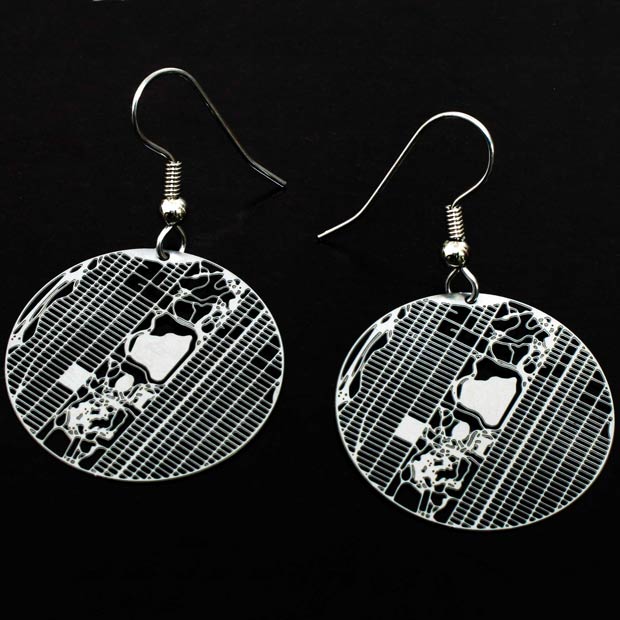WXYZ
Laura Wass strikes out on her own with jewelry combining the industrial with the handmade
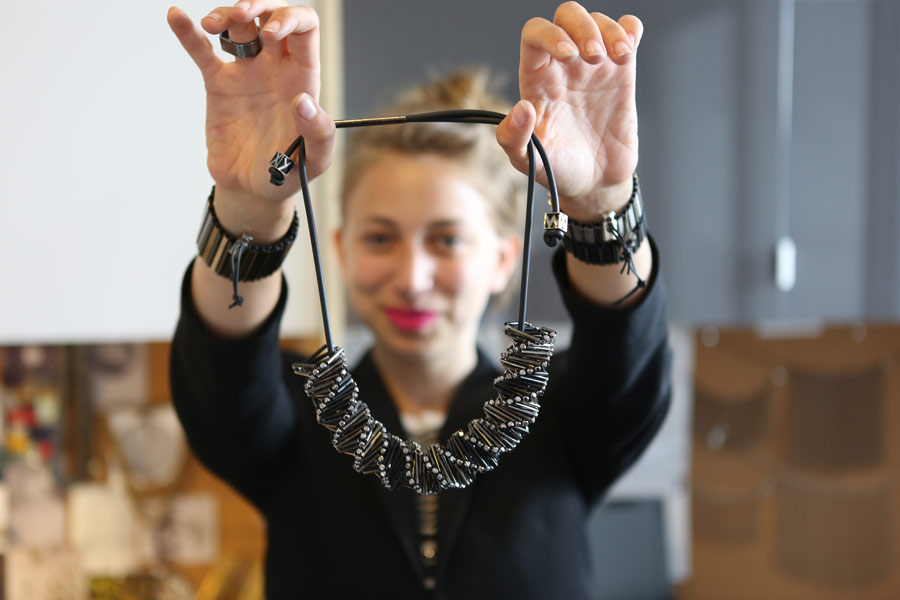
Balancing a spare, industrial aesthetic with the richness of fine jewelry, designer Laura Wass has opened up an interesting niche for herself in the market. With Fall 2012 she has launched WXYZ, a focused line of “DNA” and jacks bead necklaces, rubber and steel pulley bracelets, rubber bubble bangles and geometric metal-and-resin rings. With each detail, from the softness of the neoprene bracelet links, to the satisfying weight of a beaded helix and the almost hidden precious pearls floating in resin, Wass balances the focused precision of large-scale metalwork with handmade thought and, equally as importantly, injects a playful attitude in every serious piece.
We caught up with Wass at her studio and workspace at the 3rd Ward, where she makes it all happen, from hand-sketching and CAD—and some desktop acrobatics to keep the creative juices flowing—to steel lathing and metal finishing. With her first collection freshly launched, she filled us in on process and inspiration, while offering us a sneak peek at the Spring 2013 collection.

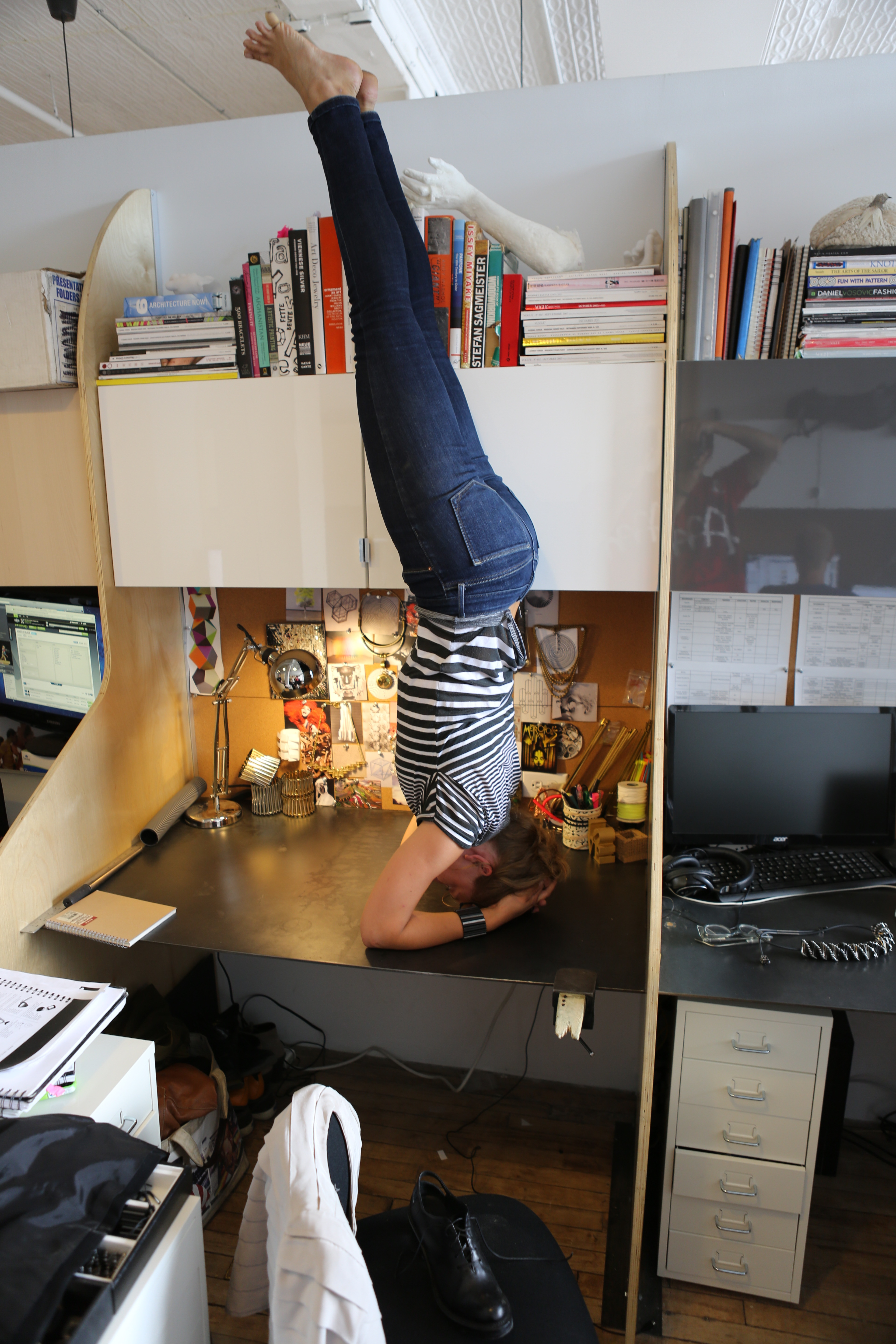
You worked with established brands—Philip Crangi, Giles & Brother, Metal Dynamics—before striking out on your own. What did it take for you to make the jump?
It was like jumping off a diving board. In some ways when I started I was anxious to start my own projects and then at the same time I felt as though I would never be quite ready. I always felt there was something more I could learn, or some way I could grow before starting my own thing, but then at some point those two paths crossed—the desire to create and the feeling that I had a really strong foundation in the industry and in manufacturing and design practice and those things came together and it was just time. And I also had the support—my boss at the last company I worked for is a great mentor, and has taught me so much about new manufacturing methods and engineering and so he was really fundamental in my growth as a designer and in helping me articulate what I wanted to do.
How did your work evolve to the industrial, and how much comes from personal taste?
It started with a fascination with the history of design and the Bauhaus movement, and it evolved as I entered the industry, and started becoming more experienced and interested in the process of how things are made. Which was always my focus—my initial entrance came from making things by hand, but then, when I started to explore the machine I saw how much more it was capable of doing, and then that drew me back again to the traditions of Bauhaus. By incorporating both the handmade and the industrially made, we get such a wide range of design capabilities, so for me it became this hunger for knowledge so that I could expand and inform my design practice.

How similar is the finished product to what you originally envision?
It definitely evolves, there are a lot of surprises. I’ll usually start with one goal or one idea and then come out with something entirely different through the process of sketching, of physically making with your hands. I think for me when I’m making something with my hands my brain is activated and starts really running through new ideas, so things tend to evolve a lot from the initial concept however there are some instances where something will just snap into my head and there it is and that’s the way it started.
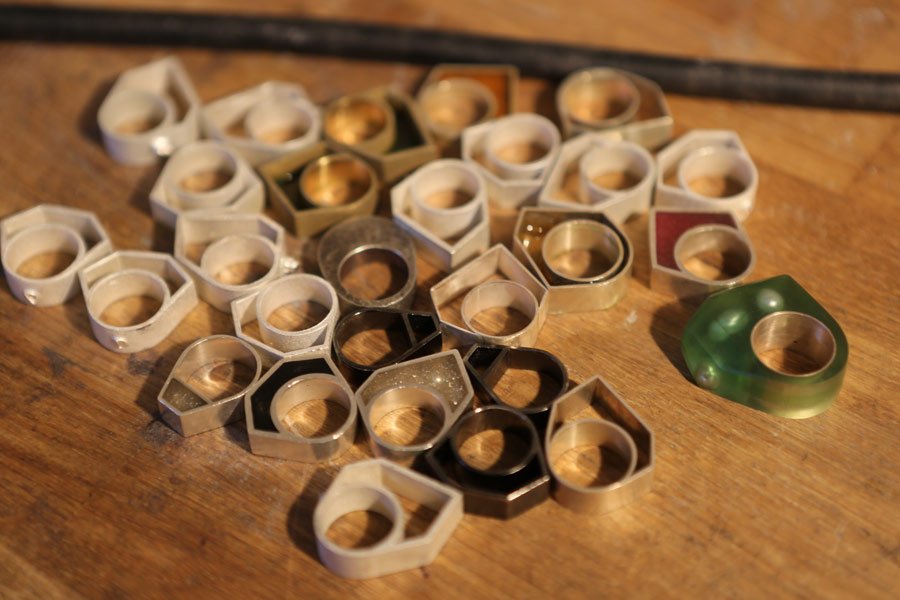
When it comes to the mix of industrial and handmade, what’s you and what are you outsourcing?
For me because the industrial and handmade production are both so important I’m really exploring as many different production methods as possible. So in order to do that I have to find as many different resources where they specialize in these different techniques. So, from die striking, brass stamping and zinc die casting to screw machining, C&Cing and lasering to water jet cutting (which is much stronger than laser cutting, surprisingly) and, let’s see what else—powder coating, plating, die cutting, ball chains, automated chain-making and lathing, which is similar to a screw machine.

The jacks beads look familiar—where did they come from?
The jacks beads are inspired by a childhood bead I played with growing up. I took the concept of that bead and engineered it in CAD—it went through about 10 different revisions, actually—I tweaked the shape and the form so that they sit together. They’re different, though. The original beads have round fronts, and I wanted to create a pyramid structure, something architectural. It’s both organic—a fundamental structure of life, almost like a chemical composition—but it’s also manmade, architectural and geometric. I wanted them to fit together with space for you to see the articulation of the shape, but also create a new form with these individual pieces.
That’s actually really important for the line—the use of individual components that together create an entirely new form. The DNA necklace is another example of that: individually they’re these beads and rods, but together they creates this whole new structure, much like the way life is made.
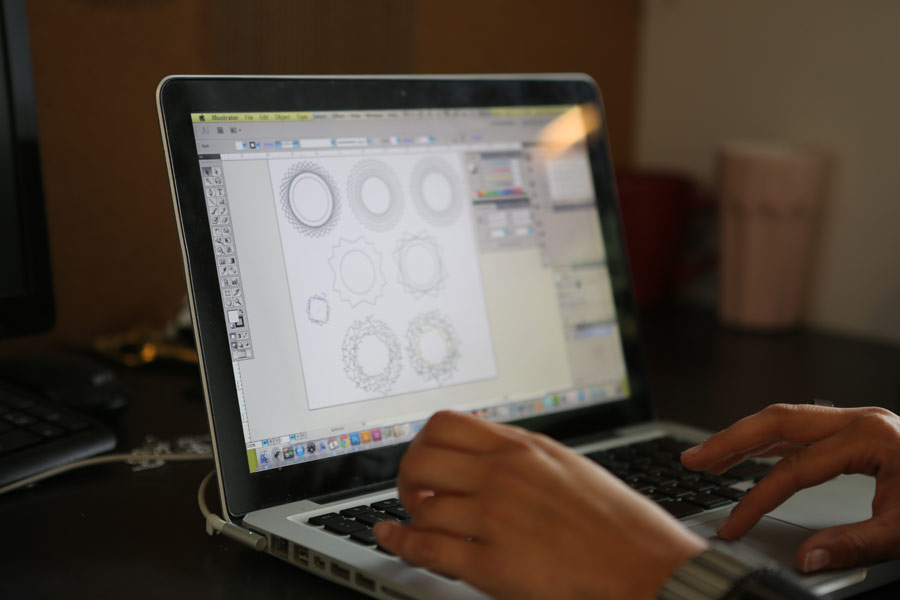
So how do you go about reengineering something?
The jacks beads are created in a blue model as a rapid prototype, and then they’re basically engraved into a steel die. So you take a piece of steel, and there are several different processes that you go through to create a negative form with this extremely hardened steel, and then the molten metal is injected into the steel die. It’s a way of casting that’s not commonly used for jewelry because it’s a very high production run—to get the machine up and running you need to have about 2,000 pieces. So, the molten metal is injected into the die, and because it’s a steel form it’s filling, it’s extremely precise, and can be replicated over and over and over, whereas as with lost-wax casting there are a lot of irregularities. So it’s perfect for this industrial, super-defined form.

Does your creative process start with the fashion and style element, or does it start with the scientific, industrial aspect?
It definitely starts with the technical, industrial and biology/chemistry part of it. For instance, right now for next season I’m really inspired by these overlapping architectural movements—so, Moorish and Arabic geometry and architecture, and how that intersects with the other histories of religious architecture, whether it be Jewish or Christian. I was just in Israel so I saw this amazing confluence of Jewish and Arabic and Christian design, and the histories of those places, what that means to so many people and how it looks—kind of like this tapestry of cultural influence. I’m looking at design motifs and architecture, and, of course, I’m looking at nature as always. Also, I’ve been thinking about mazes, and humans creating abstractions in the landscape through the use of geometry, so looking at where city and nature meet in design. Fashion, in many ways, is just the world that I live in so it kind of seeps in through the cracks of what I’m thinking. It’s not necessarily the focus, but it’s always there.
Images by Greg Stefano









